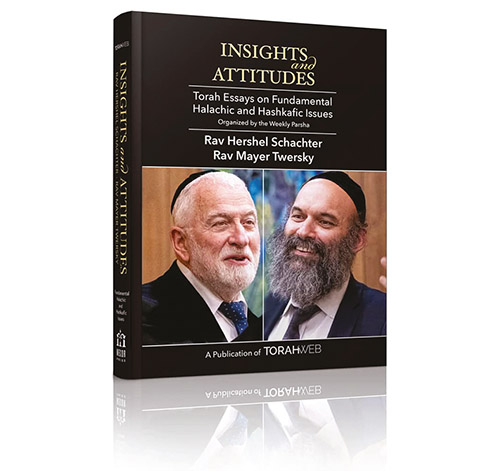
Editor’s note: This series is reprinted with permission from “Insights & Attitudes: Torah Essays on Fundamental Halachic and Hashkafic Issues,” a publication of TorahWeb.org. The book contains multiple articles, organized by parsha, by Rabbi Hershel Schachter and Rabbi Mayer Twersky.
The commentaries on the Chumash find it difficult to understand why the exodus from Egypt had to be accomplished by means of a deception. Moshe Rabbeinu only requested three days off from slavery in order to worship the Jewish God, but he knew quite well that they did not plan to ever return to slavery. Why did Hashem have Moshe fool Pharaoh?
Some have suggested (based on historical evidence) that in Egypt of old there was a law that no slave may worship any religion at all. Pharaoh’s granting of permission for the Jewish slaves to worship the Jewish God implicitly meant that he was freeing them. Therefore, there was no deception at all.
In the Talmud (Gittin 40a) we find a similar idea regarding an eved Kena’ani. An eved Kena’ani did not put on tefillin. If a Jewish adon would encourage his eved Kena’ani to wear tefillin, this was understood as an implicit indication that he had just freed him.
The Talmud (Bava Metzia 10a) comments on the pasuk (Vayikra 25:55)
כי לי בני ישראל עבדים ולא עבדים לעבדים
“Jews are exclusively God’s servants, and therefore it is improper for a Jew to sell himself as a slave.” God wants us to be totally and absolutely subservient to Him and direct slaves of His. One who is a slave to another human being cannot be totally committed to God.
On the shalosh regalim, all Jewish men are obligated to visit the Beis HaMikdash and bring special korbanos, but women do not have this obligation. Any mitzva from which women are exempt also does not apply to an eved Kena’ani, but a man who is half freed and still half eved Kena’ani is obligated to wear tzitzis and tefillin etc., because of the half of him that is free. However, with respect to the mitzva of aliya laregel, a man who is half freed and still half eved Kena’ani is exempt. The Talmud (Chagiga 4a) derives this from the phrase used in the pasuk regarding aliya laregel, ‘לראות את פני האדון ה, “to see the countenance of the Master, Hashem.” The use of the word “ha’Adon, the Master” implies exclusivity, and thus indicates that only one who is totally free of other masters can submit himself with total commitment to the servitude of Hashem.
Makkas bechoros is the only one of the ten plagues which we have mitzvos to commemorate. It was on the night that makkas bechoros occurred that Pharaoh made the official government declaration freeing the Jews. The mitzvos that recall makkas bechoros (pidyon haben, etc.) are not so much intended to recall the miracle involved in this makka, but rather to celebrate our gaining independence. Our independence enables us to commit ourselves to total and absolute subservience to God.
The Ba’al HaTanya writes (in Likkutei Torah, Derush LeRosh Hashana 3:5) that it is well known that it was during the period of the Second Temple that the Rabbis instituted many gezeiros and harchakos, as opposed to the period of the First Temple. He suggests (based on Kabbalah sources) that at the time of the First Temple, since the Jewish people had independence, they were able to be totally committed to Hashem, and therefore the yeitzer hara had less control over them. But during the period of the Second Temple, since they lacked independence, their commitment to Hashem suffered (by definition), and therefore there was a much greater need for gezeiros, because the yeitzer hara had a stronger hold on the people.
Rabbi Hershel Schachter joined the faculty of Yeshiva University’s Rabbi Isaac Elchanan Theological Seminary in 1967, at the age of 26, the youngest Rosh Yeshiva at RIETS. Since 1971, Rabbi Schachter has been Rosh Kollel in RIETS’ Marcos and Adina Katz Kollel (Institute for Advanced Research in Rabbinics) and also holds the institution’s Nathan and Vivian Fink Distinguished Professorial Chair in Talmud. In addition to his teaching duties, Rabbi Schachter lectures, writes, and serves as a world renowned decisor of Jewish Law.













